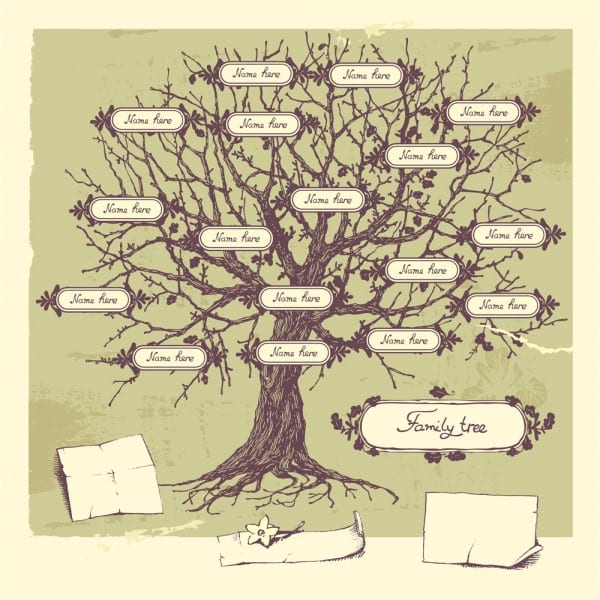Are you looking for the shortcut to building your family tree? Or, that one web site which has all the records and documents you need to help you find your ancestors? There are no shortcuts, unfortunately. Each person, each detail, and each relationship needs to be proven with high quality documents (sources) before you can even add an individual into your family tree. However, here are 6 guidelines for beginners in genealogy, to help you in your genealogy research.
Put down everything you know – or think you know – about your relatives and their life events. Dates, places, full names, nicknames, titles, education, religion, occupation(s), memberships in groups and associations, land ownership, military experience, and so on. Interview older relatives for their information as well; bring a few old photographs to help start a discussion about ancestors. You may also find that one older relative has a memoir or diary of a greatgrandparent, or a scrapbook of the immigration from Europe to Canada.
Gather photographs (or copies) from your extended family (cousins, aunts, uncles), and with help from any of the relatives, try to name and date family members in the photos as carefully and thoroughly as possible. Add other details about the photos: birthday celebration, family house, uncle's new car, name of the dog, the neighbor from across the street who came from the same county in Ireland, etc. You are trying to find every possible clue about your ancestors. Keep a pad of paper, so each photo has its own note. In your future searches, you will be surprised at how useful these notes can be!
Using a family tree software program, input individuals into your family tree, starting with yourself. One at a time, add each detail and its source. The source may be a birth certificate, a baby book, a newspaper announcement, a passport, and so on. Always list the wives with their maiden name; if unknown, then list "unknown" as their surname until you find it. Family tree programs will automatically develop a Master List of sources which you can use for future individuals, making the process much easier. Programs may be free for downloading from the internet, such as Legacy Family Tree or PAF (on FamilySearch), or may be included "free" or at a reduced price with a one-year membership to a commercial genealogy site. By the way, name your family tree with the date, so you can keep track of files more easily. You may rename it periodically, or whenever you save a new backup copy.
Work on one family tree line at a time, e.g., your mother's line, or your father's father's line. It is much easier to keep looking for all the relatives in one line, than to be flipping all over your tree. Remember that with only 5 generations, you will have 30 surnames to search – that is a large number of lines to keep track of when you are a beginner in genealogy. You may see a clue on one document that helps you look for others in that family line in a different town or country. Or, you may recognize the same unusual first name you saw in another family, giving you a clue to follow backwards. One clue leads to another, when you are tracing your ancestors, one line at a time.
Look first for documents about your ancestors which were written or generated at the time of the life event: these are considered high quality primary sources. Birth, marriage, and death (BMD) registrations and certificates are great examples of such quality sources or proof of the details. Other examples would be ship or plane passenger lists, letters which are dated and with the date franked on the stamp, education records, perhaps employment records, tax records, tax rolls, land registries, pension application forms, naturalization records, passports, and so on. If a court or church or government required a document to be made, it is likely to contain relatively accurate information. Take time to think about what sorts of other documents may have been developed during your ancestor's lifetime.
Finally, when you are looking at online family trees (someone else's family tree which seems to include some of your ancestors), never ever merge that other person’s tree into your tree. Unless – all of the individuals in the tree have details of the documents and other high quality sources to support them. Other people’s information MUST be supported and proven before you accept the details. You need to prove every relationship and detail.
By following these six simple guidelines, you will be able to build a family tree which is accurate, detailed, and can stand up to scrutiny from any of your relatives. There is tremendous satisfaction in doing genealogy research, both online and offline, and great celebrations when you find one more ancestor! Finding just the right document will have you doing your little genealogy happy dance regularly! Remember, genealogists live in the past lane, not the fast lane! Enjoy your searches for your ancestors.

